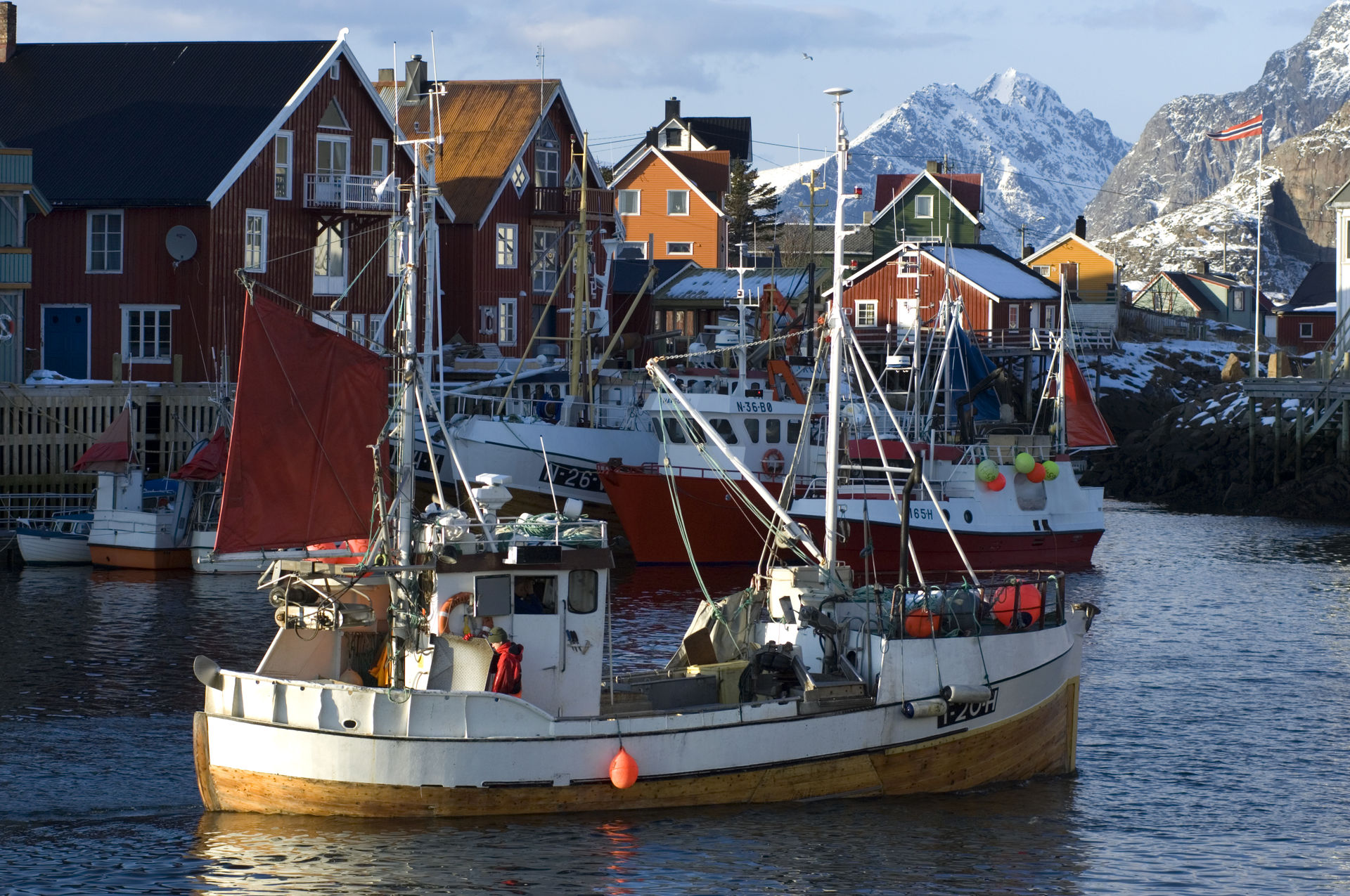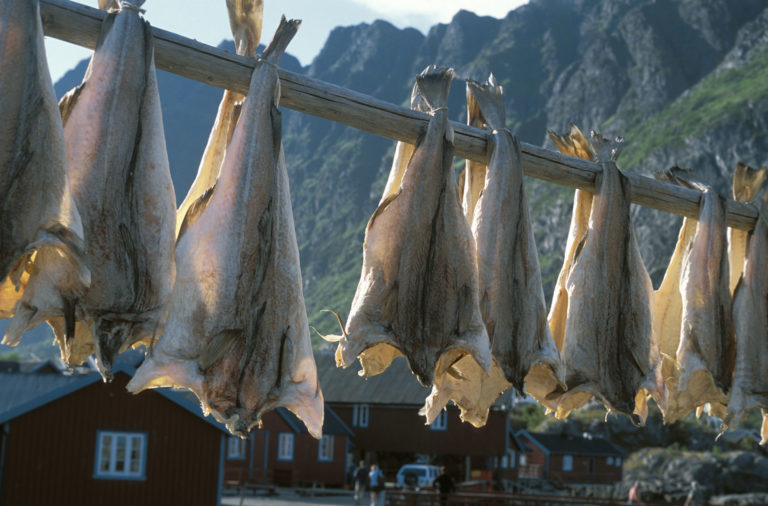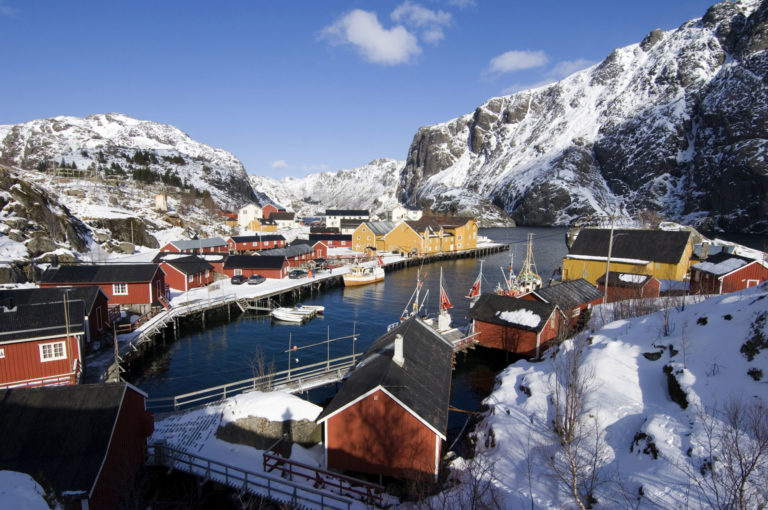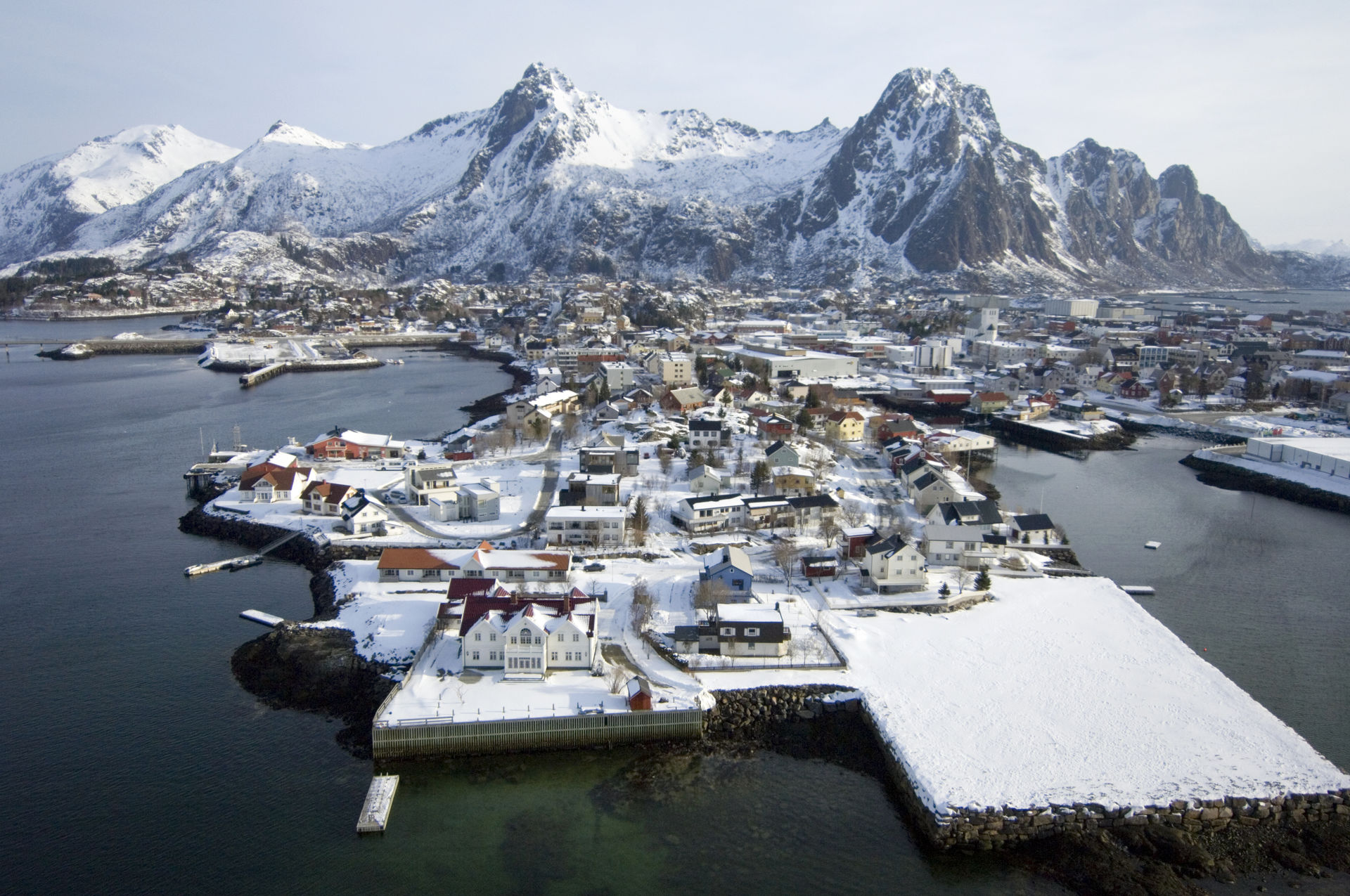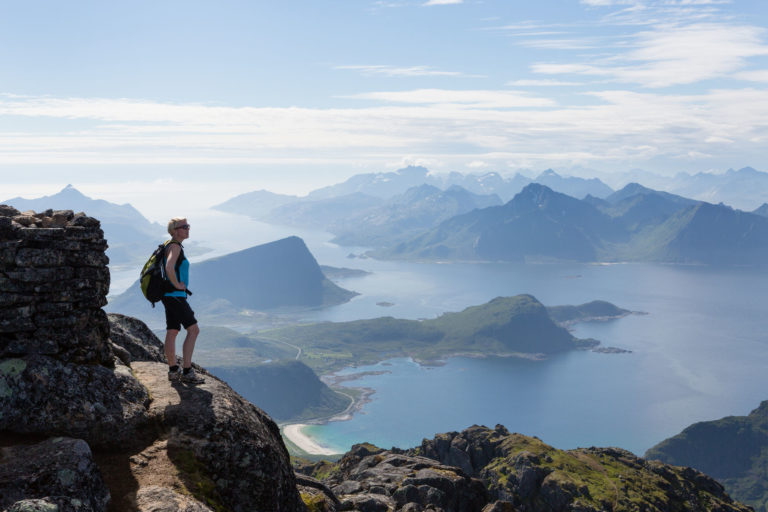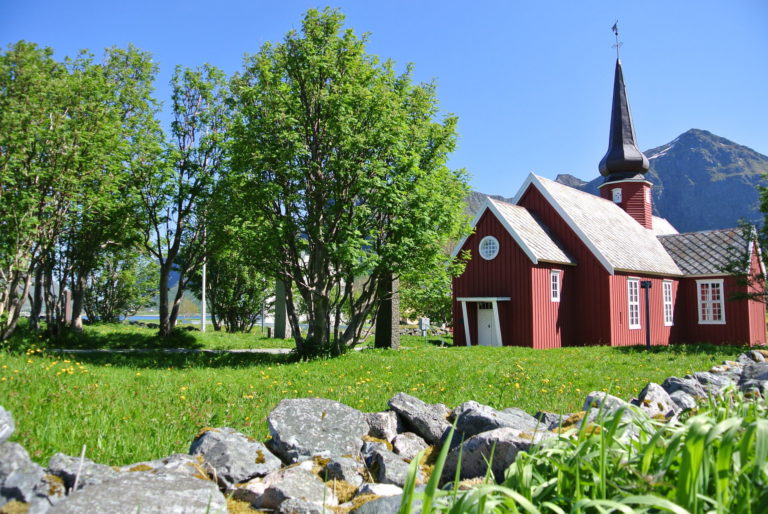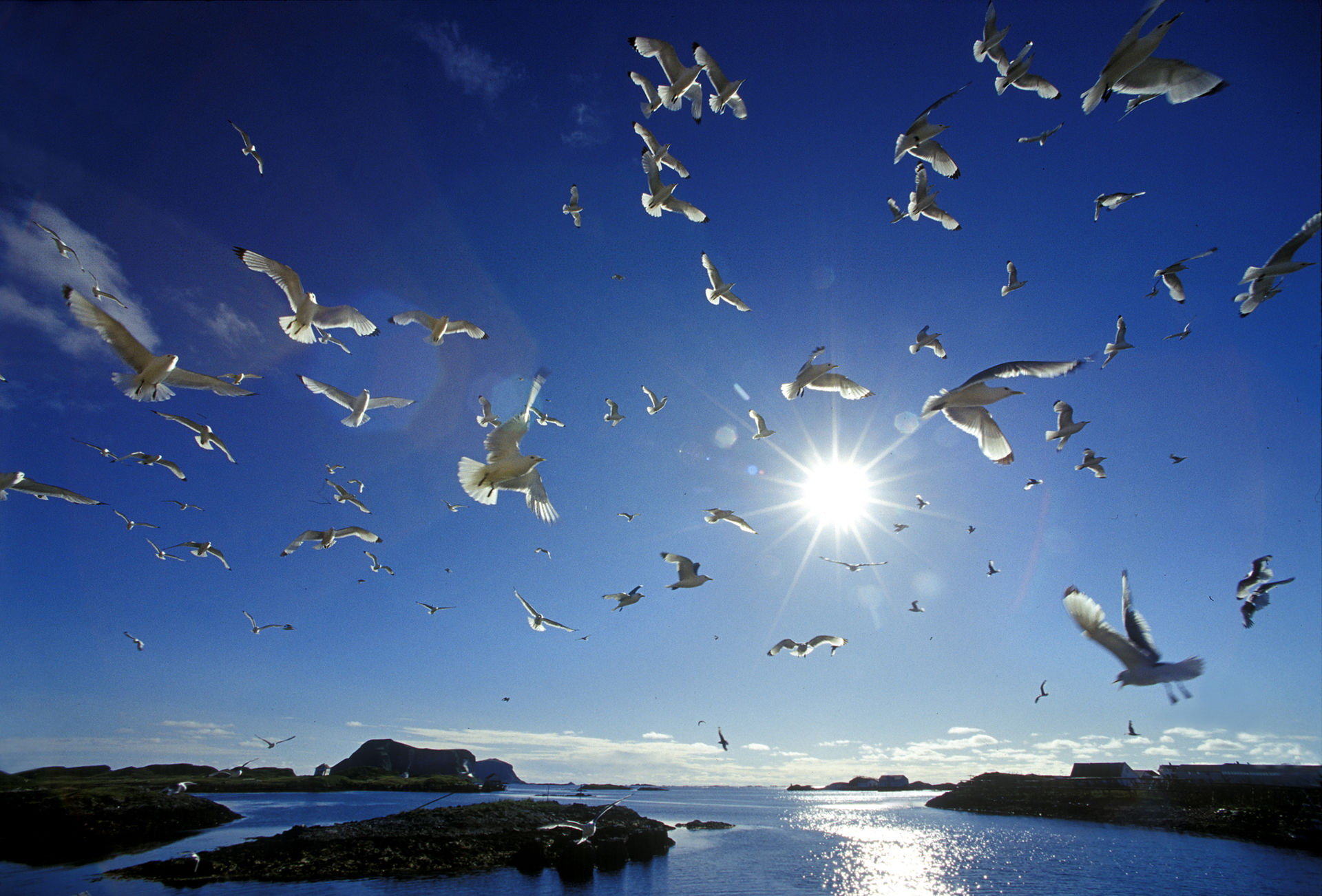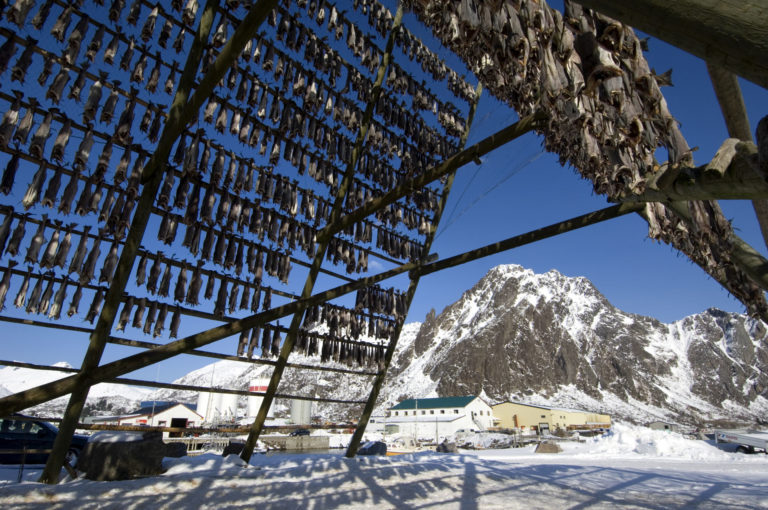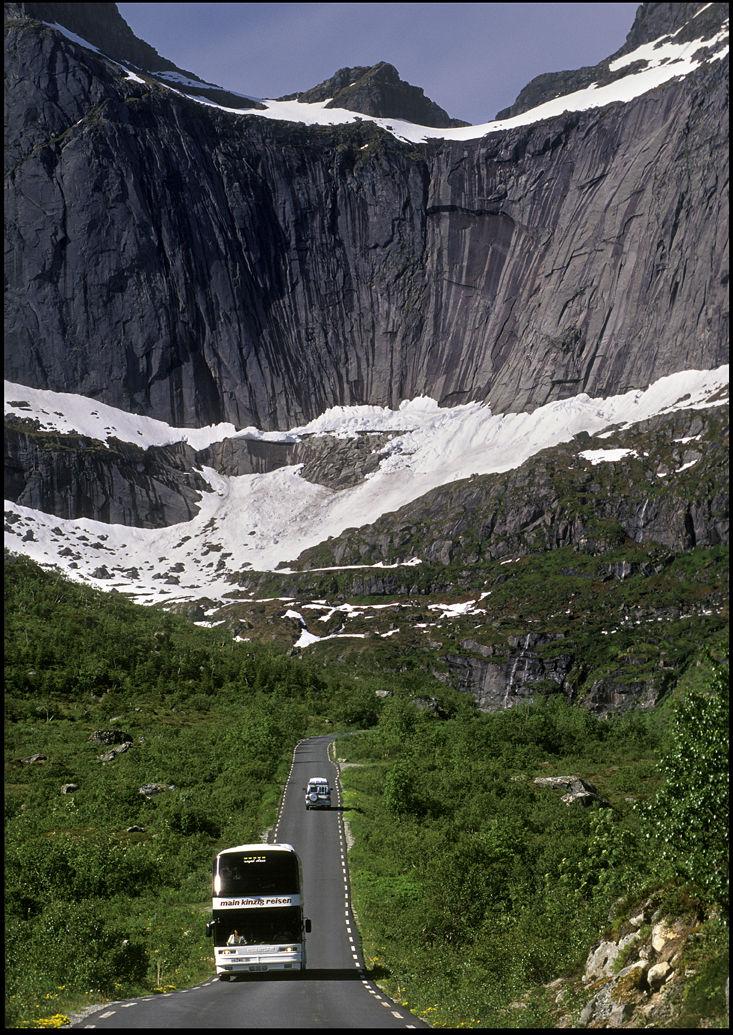The National Scenic Route through Lofoten runs through some of the country’s most dramatic landscapes, and is exceptionally beautiful. And even then you have to set aside time for all the detours: most of the best parts aren’t actually along the main road.
The National Scenic Route through Lofoten runs through some of the country’s most dramatic landscapes, and is exceptionally beautiful. And even then you have to set aside time for all the detours: most of the best parts aren’t actually along the main road.
In Vesterålen
The National Tourist Route in Lofoten starts in the far south of the neighboring archipelago Vesterålen. The elegant arc of the Raftsund Bridge offers wonderful views of the narrow sound, surrounded by 1,000 metre (3,300 ft) high mountains, but if you look to the north, you will also see the greener and more open landscape of north Vesterålen, and the 1,262 metre (4,140 ft) high spire of Møysalen. This is a landscape of dark purple, craggy mountaintops that shelter fertile villages, pleasant bays and fjord arms.
Svolvær in Lofoten
The location of the Lofoten capital Svolvær is beautiful, with a profusion of small islands and islets in a basin edged by steep mountains, all overlooked by the Svolværgeita rock formation on the mountainside. Svolvær is a vibrant city, and with its cafes, excellent restaurants, lovely art galleries and great quayside promenade, is a photographer’s dream.
Kabelvåg and Storvågen
The location of the Lofoten capital Svolvær is beautiful, with a profusion of small islands and islets in a basin edged by steep mountains, all overlooked by the Svolværgeita rock formation on the mountainside. Svolvær is a vibrant city, and with its cafes, excellent restaurants, lovely art galleries and great quayside promenade, is a photographer’s dream.
Detour to the beautiful island Henningsvær
Henningsvær is scattered over dozens of islands under the craggy 942 metre (3,090 ft) high Vågakallen. We recommend a walk down to the breakwater for some photos of the mountain and harbour. On your walk, you can stop off at Galleri Lofotens Hus, with paintings of Lofoten when it was discovered by Norwegian painters, or Engelskmannsbrygga (‘Englishman’s Wharf’) with its glass-blowers, potters and candle factory.
Gimsøy and Vestvågøy
Lofoten’s golf course lies on the smaller island of Gimsøya, with a fantastic view of the mountains of Bø in Vesterålen. Further west, the landscape has a surprise in store: behind the massive mountain range, the land levels out into a plain in the middle of the island of Vestvågøya. The main sight there is the reconstructed Viking chieftain’s house at Borg. Detours from the E10 are just as interesting: visit the fishing villages of Ballstad and Stamsund on the inner coast of the island and the surfing village of Unstad and viewpoint of Eggum on its outer coast.
Flakstadøy
Flakstad Church in the centre of Ramberg was built in 1780 from Russian drift timber. Chalk-white Ramberg beach is impossible to pass without stopping for a quick dip. The detours on this island are also unmissable: Nusfjord is a picturesque fishing village with old buildings nestled between craggy cliffs, while the blacksmith in Sund makes beautiful wrought-iron cormorants.
The outermost peaks
Moskenesøya, the outermost island in this long chain, full of jagged peaks, is like a spear being brandished at the Gulf Stream. All the settlements are concentrated along the inner coast in picturesque fishing villages with old buildings: Reine, Sørvågen, Moskenes, Tind and the village with the shortest name of all, Å. A boat trip into the Reinefjord will take you to the foot of those impressive peaks, while the Norwegian Fishing Village Museum at Å focuses on coastal culture. The Lofoten Toy Museum will bring back nostalgic childhood memories.
